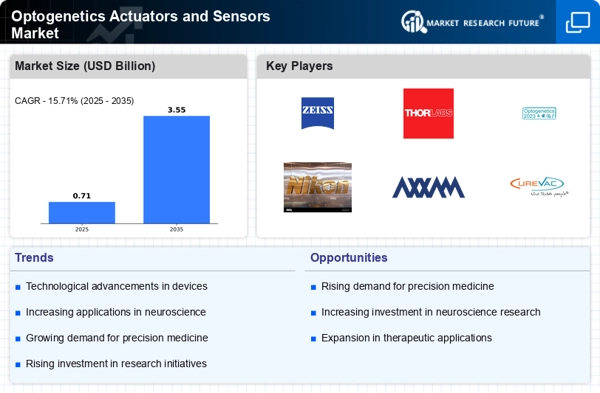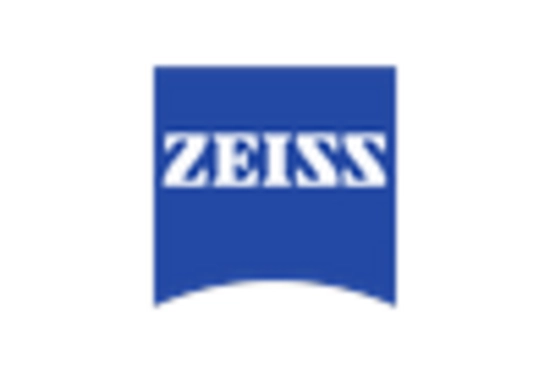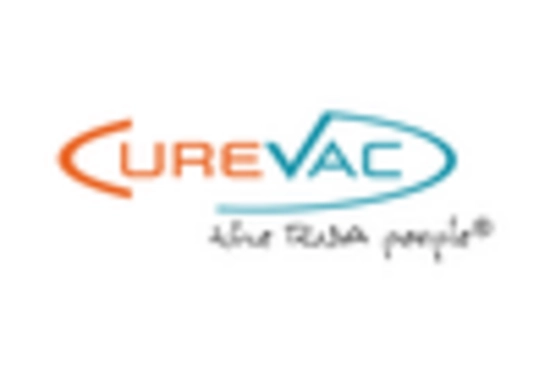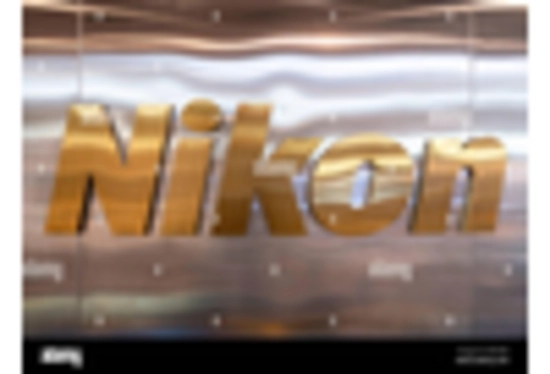Growing Interest in Gene Therapy
The Optogenetics Actuators and Sensors Market is benefiting from the rising interest in gene therapy as a treatment modality. Optogenetics offers a unique approach to gene therapy by enabling the targeted activation or inhibition of specific genes using light. This capability is particularly valuable in treating genetic disorders and conditions where traditional therapies have limited efficacy. The market is expected to expand as more clinical trials explore the integration of optogenetic techniques with gene therapy, potentially leading to novel treatment options. Analysts predict that this convergence could result in a market growth rate of approximately 15% over the next five years, highlighting the potential of optogenetics in therapeutic applications.
Rising Demand for Neurological Research
The Optogenetics Actuators and Sensors Market is experiencing a surge in demand driven by the increasing focus on neurological research. As researchers seek to understand complex brain functions and disorders, optogenetics provides a powerful tool for manipulating neuronal activity with light. This method allows for precise control over specific neurons, facilitating groundbreaking studies in areas such as Parkinson's disease, epilepsy, and depression. The market is projected to grow significantly, with estimates suggesting a compound annual growth rate of over 20% in the coming years. This growth is likely fueled by the need for innovative solutions in neuroscience, making optogenetics an essential component of modern research methodologies.
Advancements in Optogenetic Technologies
Technological innovations within the Optogenetics Actuators and Sensors Market are propelling the sector forward. Recent advancements in light-sensitive proteins and delivery systems have enhanced the efficacy and precision of optogenetic tools. For instance, the development of new actuator types, such as red-shifted opsins, allows for deeper tissue penetration and reduced phototoxicity. These improvements not only expand the range of applications but also increase the appeal of optogenetics in both research and clinical settings. The market is likely to witness a robust growth trajectory as these technologies become more accessible and user-friendly, thereby attracting a broader base of researchers and clinicians.
Regulatory Support for Innovative Research
The Optogenetics Actuators and Sensors Market is positively influenced by regulatory support aimed at fostering innovative research. Regulatory bodies are increasingly recognizing the potential of optogenetics in advancing scientific understanding and therapeutic development. This support manifests in streamlined approval processes for research tools and funding initiatives that promote the use of optogenetic technologies. As regulations become more favorable, researchers are likely to invest more in optogenetic tools, thereby stimulating market growth. The anticipated increase in funding and resources allocated to optogenetics could lead to a more vibrant and competitive market landscape.
Increased Collaboration Between Academia and Industry
The Optogenetics Actuators and Sensors Market is witnessing a notable increase in collaborations between academic institutions and industry players. These partnerships are essential for translating basic research into practical applications, fostering innovation, and accelerating the development of new optogenetic tools. By pooling resources and expertise, these collaborations can lead to the creation of advanced actuators and sensors that meet the evolving needs of researchers. This trend is likely to enhance the market landscape, as it encourages the sharing of knowledge and technology, ultimately driving growth and expanding the range of available products.


















Leave a Comment